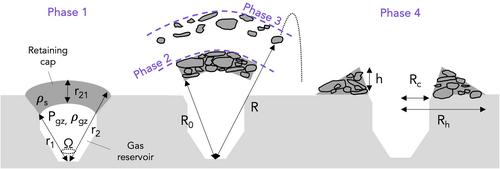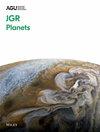An Endogenic Origin for Titan's Rampart Craters: Assessment of Explosion Mechanisms
Abstract
Rampart craters are a class of lakes or depressions in Titan's north polar region that have morphological attributes suggestive of an explosive origin. Two previous studies have proposed that rampart craters form via nitrogen or methane vapor explosions analogous to terrestrial maar explosions. We propose a new terrestrial analog for rampart craters: gas emission craters (GECs) found in permafrost zones. We evaluate the explosive origin of Titan's rampart craters by modeling the dispersal of material from an explosive vent. The dimensions of nine rampart craters with radar-bright ramparts were used to model the explosion process. The model yields a range of explosion conditions (e.g., gas mass and reservoir depth) producing ejecta dispersal patterns matching the observed features. We find that gas masses of 1011–1014 kg are required to produce a rampart crater. We examine two explosion scenarios: (a) rapid, maar-like vaporization and explosion of liquid nitrogen or methane, and (b) more gradual gas accumulation and explosion akin to a GEC driven by methane released from destabilizing clathrates. If Titan's crust is composed of pure water ice, the calculated gas pressures are consistent with a rapid, maar-like explosion mechanism. If the subsurface is predominantly composed of organic materials or clathrate, either scenario may be plausible. Further research on the composition and tensile strength of Titan's subsurface are required to discriminate between hypotheses. Nevertheless, we conclude that explosive dispersal of ejecta from a vent can account for the morphologies of Titan's rampart craters and may contribute to atmospheric methane replenishment.


 求助内容:
求助内容: 应助结果提醒方式:
应助结果提醒方式:


